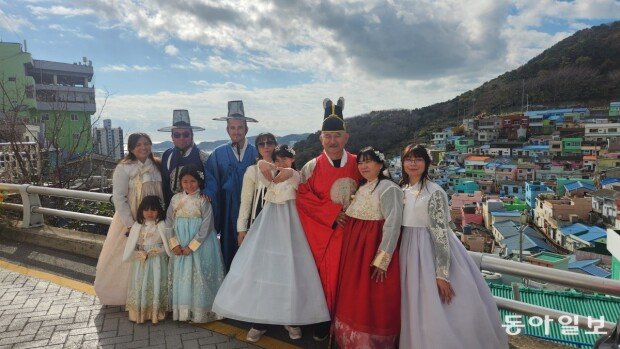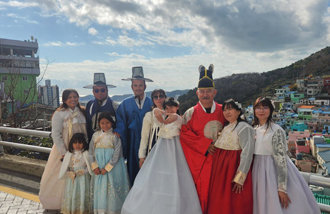Henequen descendants visit Korea and share pride in the country
Henequen descendants visit Korea and share pride in the country
Posted November. 27, 2024 07:49,
Updated November. 27, 2024 07:49

“It’s so beautiful,” said Manuel Alfonso Kim (age 59) at Gamcheon Culture Village, Saha-gu, Busan, on Sunday afternoon, as he gazed down at the terraced houses on the hillside and Gamcheon Port wearing a rented hanbok. “Bonito,” he repeatedly said, which means beautiful in Spanish. “I know that my grandfather, who relocated to Mexico, tried to send money to his home country but couldn’t as he was struggling as well,” Kim said.
Kim is a descendant of “Henequen,” a type of agave that refers to descendants of Korean immigrants to the henequen plantations in Mexico. His grandfather, who left Jemulpo, Incheon and settled down in Merida, Mexico in 1905, worked at a Henequen plantation. More than 1,000 people who left Korea by boat worked over 12 hours a day in hot, remote areas, without receiving proper wages.
Last Thursday, Kim set foot on Korean soil for the first time with his family of 10, including his son and granddaughter. He plans to travel to Gyeongju, Jeonju, and Seoul throughout next Thursday. The family admired skyscrapers and coastal scenery from the Haeundae Beach Train and Songdo Marine Cable Car. “I will never forget the Gwangalli Drone Show. There are no events using drones in Mexico” said Carlos (age 37), boyfriend of Kim’s daughter. “Korea has amazing science and technology.”
Thousands of third- to fifth-generation Henequen descendants reportedly live in Mérida, Yucatan, Mexico. Although they do not know the specifics of their ancestors' roots, they remember Korea by gathering every year on March 1, and Liberation Day, singing the national anthem and Arirang. “Being of Korean descent has always been my pride,” said Kim’s son, May Alfonso. “I’m very proud that I have Korean roots when I see Korea leading the world through K-pop and high-tech industries.”
부산=김화영 run@donga.com
Headline News
- Trump’s proposed tariffs on Mexico, Canada, and China spark global trade concerns
- Samsung C&T and partners secure 5.2 trillion won Qatar plant order
- Seoul launches early-morning autonomous bus service
- Kiwoom Heroes signs with outfielder Yasiel Puig
- Lee acquitted of subornation of perjury charges in first trial







